In the midst of the current presidential race here in the U.S., with all the rhetoric about who’s out and who’s in (whether the framework in question regards presidential contenders or who has access to the citizenship that would allow a person to vote for them), I thought it might be time to share one of my favorite clips from A Pervert’s Guide to Ideology, one that I use in my classes quite a bit, in which Slavoj Žižek discusses the seeming universality of Beethoven’s 9th Symphony and, in particular, the “Ode to Joy”. “Unity” is always manufactured by exercising certain exclusions. A good thing to keep in mind during this presidential cycle as more candidates start dropping out and more political ads keep rolling in.
Love in a Time of Scholarship
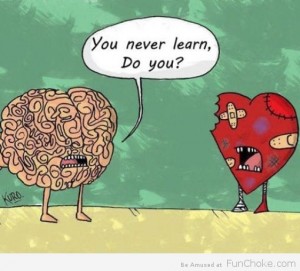
At the most recent American Academy of Religion meeting in Atlanta, I was appreciative of the NAASR program that asked its participants to think through the place of “theory” in the academic study of religion. You can see the program overview and description here. The NAASR discussion now seems even more relevant in light of the 2016 AAR theme: “Revolutionary Love.” Russell McCutcheon recently wrote a blog post responding to it, wherein he suggested “those members of the AAR, such as myself, who understand the academic study of religion to be something entirely apart from being faithful in the world (whatever that may mean), will surely hesitate, or even balk, when reading this theme.” Continue reading “Love in a Time of Scholarship”
Global Grover, Meet Edward Said

Being the parent of a toddler has introduced me to all sorts of things I’d never have known about otherwise: how many Legos can be stacked before a tower topples, the sound of a stuffed rabbit singing when I accidentally step on it at 2a.m. (yes, I’ve done it more than once, and yes, it’s just as terrifying as you’d expect), the exact amount of time a paper airplane proves entertaining until it just decidedly doesn’t, the glee inspired by dogs and cats yowling “Jingle Bells,” and…most recently, Global Grover.
I don’t have cable, and I’m just fine leaving well enough alone when it comes to the shows my kid doesn’t know he’s missing until such a time as they become unavoidable. But my own generation was raised on TV, and I don’t have an ultra cynical take on it… and I do remember fondly the old standbys, namely Mr. Rogers’ Neighborhood and Sesame Street. So I just shrug when, despite best efforts, certain things just slip into my child’s consciousness. He’s only just two, and he already sings the melody and words from the Elmo’s World theme song, for crying out loud. Resistance is futile. Continue reading “Global Grover, Meet Edward Said”
Response to the American Academy of Religion’s Statement on Academic Freedom, Part 2
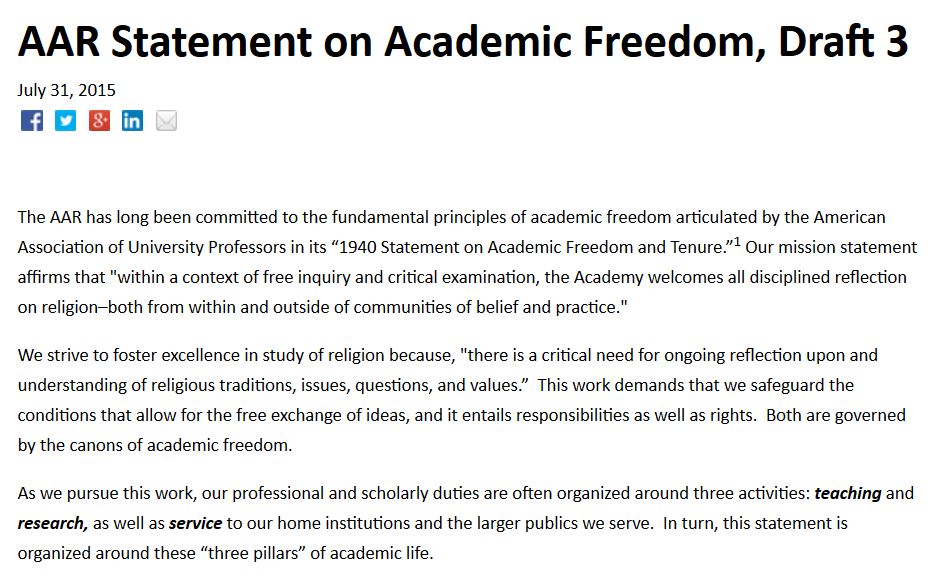 Recently, the Board of Directors of the American Academy of Religion released a draft update to its 2006 statement on Academic Freedom and the Teaching of Religion and solicited feedback from members. Given that the members of Culture on the Edge are all scholars of religion, some have opted to offer their feedback to the AAR via this short series of posts on our site. (An index to all the posts in this series can be found here)
Recently, the Board of Directors of the American Academy of Religion released a draft update to its 2006 statement on Academic Freedom and the Teaching of Religion and solicited feedback from members. Given that the members of Culture on the Edge are all scholars of religion, some have opted to offer their feedback to the AAR via this short series of posts on our site. (An index to all the posts in this series can be found here)
Merinda Simmons
The AAR Statement on Academic Freedom reads as rhetorically and intellectually scattered at best. The terms it leaves undefined (like “responsible”, “unsettling”, “sensitive”, along with a host of others) are not done any favors by the contradictory passages that directly undercut each other. Take, for instance, a couple of sentences early on in the Research section: “Researchers have the right to follow lines of inquiry where they lead but also the responsibility to exercise care, recognizing that our discoveries may have implications for the self-understanding and well being of students, colleagues, and members of the public. Criticism should not impede judicious critical scholarship, and our shared commitment to free inquiry means that scholars must be free from intimidation and free to form conclusions on the basis of shared scholarly norms, as understood by qualified peers.” Continue reading “Response to the American Academy of Religion’s Statement on Academic Freedom, Part 2”
The Moves We Make
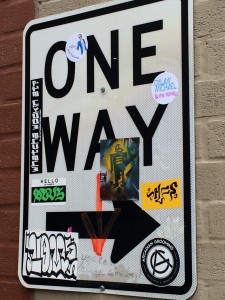
Prompted by the discussion surrounding Rachel Dolezal’s NAACP resignation, this series of posts is about how and when we take performativity seriously… and when it bows to interests in historical or experiential specificity.
If I’m counting, I’ve read exactly one smart thing about Rachel Dolezal on the internet—Adolph Reed Jr.’s “From Jenner to Dolezal: One Trans Good, the Other Not So Much” (thanks, Craig Martin, for directing my attention to it). In the piece, Reed says, among other things, that the distinction between trans people’s “involuntary” decision and Dolezal’s “active choice” where self-identification is concerned “is mind-bogglingly wrong-headed, but it is at the same time thus deeply revealing of the contradictoriness and irrationality that undergird so much self-righteous identitarian twaddle.” But wait, I’m getting ahead of myself. I need to explain why I think we should still even be talking about Rachel Dolezal, right? Continue reading “The Moves We Make”
Authorizing Authority: Some Notes from May Day
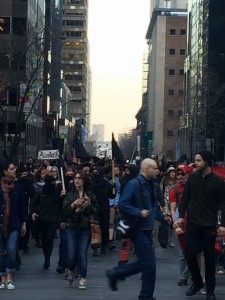
While spending a few days in Montreal, my partner and I (and our 16-month-old) were detoured several times while walking back to our hotel from an event at McGill University (though I did manage to snap a few pictures of what was going on, which I’ve included in this post). It was May Day, which many may associate simply with maypoles and flowers, a la Guinevere’s pastoral frolicking in Camelot, but which is also International Workers’ Day—a celebration and reminder of the important roles played around the world by those in working classes who often go forgotten in conversations on public policy and legislative prioritization. Of course, some tend to think of the September Labor Day in the U.S. as a day off and a chance to toss some burgers on the grill. But the May date for International Workers’ Day was chosen in the late 19th century to commemorate the so-called Haymarket affair of 1886, which began as a group of workers demanding an eight-hour work day and protesting the deaths of some workers the day prior at the hands of the police during what had been an nonviolent rally. When someone in the crowd tossed a bomb during the demonstration at Haymarket Square, the police began shooting. Eleven people were killed, and many were wounded. Continue reading “Authorizing Authority: Some Notes from May Day”
Informed Dissent

In the ongoing debate about whether or not vaccinations should be mandatory (a debate between so-called “anti-vaxxers” and…well, the people who use that label, the latter of which enjoys majority status to a degree that allows them to forego caricature), the ol’ individual-liberty-versus-public-good rhetoric reared its head really quickly. And perhaps that should come as no surprise. After all, people engaged in the debate are talking about where personal/parental rights stop and the good of the larger public start and vice versa…aren’t they? That’s certainly the nominal subject of the controversy. But “individual liberty” and “public good” certainly live on an ever-sliding scale and are employed by different groups with different politics depending on the context. Continue reading “Informed Dissent”
You Are What You Read, with Merinda Simmons (Part 1)

For a new Culture on the Edge series “You Are What You Read” we’re asking each member to answer a series of questions about books — either academic or non-academic — that have been important or influential on us.
1. Name a book you read early on that shaped the trajectory of your career.
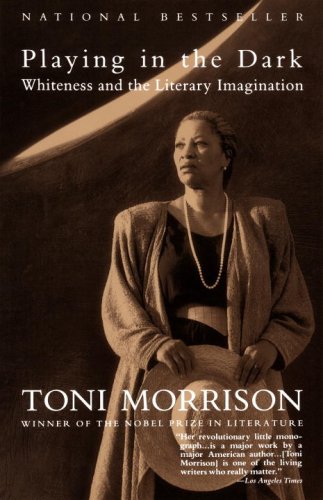 I was still very early in my graduate studies in English when I came across Toni Morrison’s Playing in the Dark: Whiteness and the Literary Imagination. Morrison is best known for her novels, of course, but this tiny book is a critical examination of what she calls an “Africanist presence” that has been key, in her reading, to the construction of literary notions of “Americanness.” I tend to think—both in fiction and in criticism, Morrison is at her best when she is at her most concise. My favorite of her novels has always been the quick but powerful read Sula, and I’m similarly taken with her ability to pack a lot of punch in the mere 91 pages of Playing in the Dark.
I was still very early in my graduate studies in English when I came across Toni Morrison’s Playing in the Dark: Whiteness and the Literary Imagination. Morrison is best known for her novels, of course, but this tiny book is a critical examination of what she calls an “Africanist presence” that has been key, in her reading, to the construction of literary notions of “Americanness.” I tend to think—both in fiction and in criticism, Morrison is at her best when she is at her most concise. My favorite of her novels has always been the quick but powerful read Sula, and I’m similarly taken with her ability to pack a lot of punch in the mere 91 pages of Playing in the Dark.
At that point as a grad student, I thought I’d be taking a relatively traditional approach, doing close readings of the works by “great” American writers (J. D. Salinger was the one I most wanted to write about). What struck me about Morrison’s text at the time was her interest in the structural or contextual concerns of the fiction she discusses (by Poe, Melville, Cather, and Hemingway, specifically). She deals with the ways in which ideas of individualism, freedom, manhood, discovery, etc.—all popular themes in so much American writing—rely heavily on an oppressive racial power structure that creates the space for writers and scholars to naturalize that very structure by ignoring concerns of racial identifications in the pursuit of “humanistic” matters. This was a big and productive blow to what I then thought to be the different and distinct worlds of “text” and “context.” Continue reading “You Are What You Read, with Merinda Simmons (Part 1)”
Identifying Identity with Craig Martin
“Identifying Identity” offers a series of responses from members of Culture on the Edge to the following claim made by Facebook’s Mark Zuckerberg:

The End of the (Face)Book and the Beginning of Writing
In Of Grammatology, Jacques Derrida deconstructs the metaphysics of presence: differance — nothing in itself — is the constitutive negativity that makes presence possible yet impossible. No thing can ever be present to itself or to another without the insertion of differance, the gap that makes hearing or vision — or any form of knowing — possible in the first place, and that gap makes full presence a priori impossible.
Zuckerberg’s comments on identity strike me as a defense of the metaphysics of presence: the self with integrity — the integral self — must make itself fully present to itself and to others. To hide part of the self is, apparently, to lack integrity. In this Zuckerberg is correct, except that that very lack of integrity is what makes selves possible in the first place; unless we except our selves from our selves, we cannot be present to another at all. Every manifestation of a self on Facebook is always already constituted by differance; every click is a dislocation of unity. The loss of integrity is what makes the self visible. There is nothing outside the text —this process of textuality, iterability, and writing is what weaves selves into existence in the first place (although, for Derrida, this means that there is no “in the first place”). Continue reading “Identifying Identity with Craig Martin”
Identifying Identity with Monica Miller
“Identifying Identity” offers a series of responses from members of Culture on the Edge to the following claim made by Facebook’s Mark Zuckerberg:

Zimmer’s critique of Zuckerberg’s disingenuous claim that somehow having more than one identity equates to a lack of integrity is spot on. In fact, Zuckerberg’s claim is laughable, for we analysts know all too well that identities are never singular nor static – rather – always fluid over time and space and most importantly perhaps, they are co-constitutive and contingent, never of their own complete making. This thinking, about identity and identities is well marked by the work we do here at The Edge insofar as we take seriously Bayart’s assertion that “there is no such thing as identity, only operational acts of identification.” With that in mind, and pushing further the constructed nature of and the tactics and strategies that make identities possible, the social actor does not have complete control over how their identities are made – and more so – how such identities are read and represented, especially as they are mediated technologically in and through online formats like social media. Continue reading “Identifying Identity with Monica Miller”
